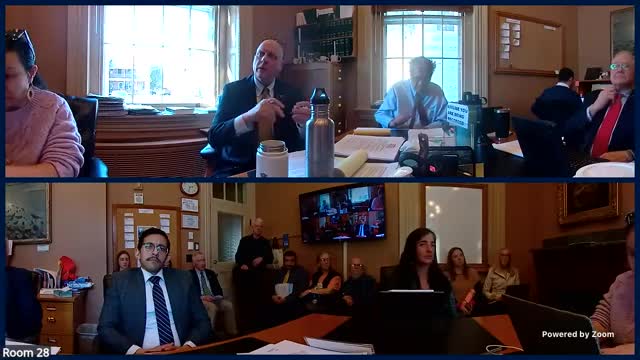
This article was created by AI using a video recording of the meeting. It summarizes the key points discussed, but for full details and context, please refer to the video of the full meeting. Link to Full Meeting
Jeff Bennett, the executive director of the Vermont National Education Association, took center stage, emphasizing the remarkable successes of Vermont's public schools. He pointed out that despite the challenges, Vermont ranks among the top states in the nation for eighth-grade literacy and graduation rates. Bennett celebrated the achievements of notable alumni, including Nobel Prize winners and celebrated artists, attributing their success to the robust educational foundation provided by local schools.
However, the meeting also revealed a troubling trend: a significant reduction in staffing across schools, with nearly 400 educators laid off in recent budget decisions. Bennett noted that these cuts, while approved by local voters, reflect a broader concern about the sustainability of educational quality in the face of financial constraints. He urged lawmakers to recognize the deep investment communities make in their schools, which often goes unnoticed.
As discussions turned to H 454, Bennett expressed cautious support for the bill, highlighting its potential to protect educators' rights amid ongoing workforce shortages. Yet, he raised concerns about specific provisions, particularly those related to class size regulations. He warned that setting rigid class size limits could have unintended consequences, especially for small rural schools that may struggle to meet these targets without adequate funding for construction and resources.
The conversation also touched on the financial aspects of the proposed legislation. Bennett pointed out the importance of a realistic inflation adjustment in the funding formula, cautioning against political expediency that could undermine the financial stability of schools. He advocated for a more nuanced approach to inflation calculations, suggesting the inclusion of healthcare costs, which he identified as a significant driver of educational expenses.
As the meeting concluded, it was clear that Vermont's education system stands at a crossroads. With a commitment to preserving the quality of education and addressing the pressing challenges of staffing and funding, lawmakers and educators alike face the daunting task of navigating a path forward. The discussions from this meeting will undoubtedly shape the future of education in Vermont, as stakeholders work together to ensure that all students continue to thrive in their learning environments.
Converted from Senate Education 2025-04-22 1:30PM meeting on April 23, 2025
Link to Full Meeting
Comments
View full meeting
This article is based on a recent meeting—watch the full video and explore the complete transcript for deeper insights into the discussion.
View full meeting